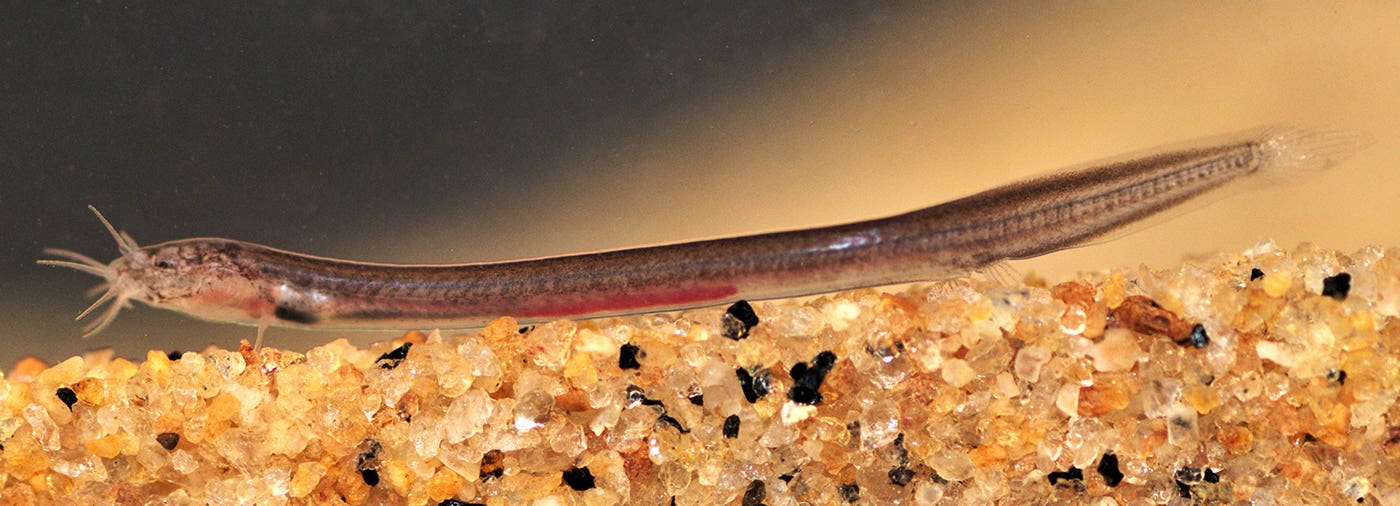Close your eyes and imagine for a moment that you are time-traveling back. All the way back, 180 million years to be specific, through geologic timescales and tectonic shifts, to the breaking up of a supercontinent.Gondwana, parent to Pangea and colossal mass of the Earth’s crust covering around one-fifth of the planet’s surface, is beginning to fragment. Pieces of this geological giant drift apart over millions of years as its remnants shift into different corners of the world. One of these lone landforms sets off on a solo journey northward, drifting over thousands of kilometers as its species evolve in isolation over millions and millions of years. Continuing along a path of epic, ocean-forming proportions, this remnant finally collides with Eurasia to result in what we currently know to be the Himalayas. Today, this chip off the old Gondwana block is known as the Indian Subcontinent, whose isolated journey across geologic timescales has made it one of the world’s richest biodiversity hotspots.
Like most ancient evolutionary histories, India’s is still being written today. Traces of it can be found in the least likely of places.Hidden from light and secluded beneath the soil’s surface in the narrow lateritic aquifers of the southern Indian state of Kerala, we find sightless, sensorially evolved lineages of this ancient past: subterranean freshwater fish. Studying and understanding this elusive, slightly bizarre group of species may hold exciting possibilities for our own future and unknown insights into evolutionary history. But accessing these fishes and unlocking their secrets is no easy task. It requires a bit of luck and a lot of cooperation.Enter, Mr. Abraham and the Pathala eel loach.
From the showerhead to the lab: the power of citizen science
It’s the morning of Oct. 24, 2020. Mr. Abraham, a local stage decorator living in Chengannur, in the Alappuzha district of Kerala, is just waking up. He begins his morning routine like most days, with a shower.
Suddenly, Mr. Abraham notices something falling from above, out of the showerhead onto his bathroom floor. It appears to be a small, thin, slippery thing squirming before him. Calmly, Mr. Abraham grabs the closest glass jar available, places the tiny vibrant creature inside it, and carefully stows the jar away in a safe place. Picking up the phone, Abraham calls the researchers from the Kerala University of Fisheries and Ocean Studies (KUFOS). In the following days, KUFOS’s researchers arrive at Mr. Abraham’s house to collect the specimen of what would soon be the discovery of a peculiar, new-to-science species of subterranean freshwater fish: Pangio pathala, or, the Pathala Eel Loach, ‘Pathala’ meaning “below the feet” in Sanskrit.
While the Pathala Eel Loach ending up on Mr. Abraham’s bathroom tiles happened to be pure luck, his quick thinking and preservation of this elusive organism was not.Like other residents in the state of Kerala, Mr. Abraham had learned about the existence of these unique groundwater fishes through a strategic, ongoing outreach effort from the local researchers at KUFOS. This initiative would provide the researchers with otherwise unattainable access to fishes that can typically only be found concealed in caves and wells on private property.
Perhaps no one knows the challenges of studying these curious fishes, their ancient past, and their uncertain future, quite like Rajeev Raghavan, assistant professor at KUFOS’s Department of Fisheries Resource Management and co-author of the Pathala Eel Loach study, and his team of researchers.“The people who live in these households are the first point of contact. Without their help and support, this project would never have taken off. We are 100% dependent on people as citizen scientists,” he said.
For Michael Edmondstone from SHOAL Conservation, the story shows how everyday citizens can play vital roles in contributing to science."This discovery is a striking example of the importance of engaging local communities in conservation. The Pathala eel loach may never have been recorded if Mr. Abraham didn't know to call the KUFOS specialists who had spoken with him and his community about the rare species of fish that live there. Anybody can help increase scientific knowledge – not just the trained scientists."
A fear of fish: misconceptions about water quality
Starting back in 2016, the KUFOS researchers began to slowly and deliberately build up a network of people who had spotted these subterranean fishes in their wells. As word has gradually spread in the community, a shift in certain fears and misconceptions about these tiny aquatic mysteries is slowly taking place.Because of their bright colors, a lot of citizens believe the fish to be toxic, and that finding a fish in a well is a sign that the water is contaminated, leading many to either kill the fish on the spot, or “disinfect” the water by chlorinating the wells. But Raghavan explains that this perception is far from the truth.
“Because they live in underground water systems, these fishes are extremely sensitive," he said. "There has been no major interference from humans or from other areas, so there have been very few changes to these habitats for millions of years. Any small changes would lead to extreme mortality. What we are trying to tell people is that the occurrence of these fish in these wells is an indication of extremely good water quality. They couldn’t survive in water that is polluted.”
“Because they live in underground water systems, these fishes are extremely sensitive…There has been no major interference from humans or from other areas, so there have been very few changes to these habitats for millions of years… Any small changes would lead to extreme mortality. What we are trying to tell people is that the occurrence of these fish in these wells is an indication of extremely good water quality. They couldn’t survive in water that is polluted.”
Possibilities for the future, answers from the past
The vulnerability of these highly sensitive subterranean dwellers points to a core reason why studying this specific group of species in this unique region is so important.
Raghavan explains that because of this long-term isolation and evolution, these fishes have bizarre morphological characteristics — enhanced non-visual senses like smell, taste, and mechanosensory systems — meaning that researching these species could open up interesting possibilities for medical breakthroughs.
“Many of these organisms can serve as models for biomedical research," he says. "For example, a lot of these underground fish have no eyes and are blind, and there are studies happening now to understand the evolution of blindness. Because most of these fish are blind, they have evolved other advanced structures on their body. They have an extensive set of minute pores that serve as sensory structures. So even though they cannot see, they have an exceptional sense of smell. Also, most of the fish that we have received in the lab have come with empty stomachs, and of course, having a vertebrate model that can live for several months without food could potentially help us understand starvation better. There are so many dimensions to be found in studying these fish.”
Apart from the exciting future possibilities of understanding these fishes better, there is also an ancient past to consider. Think back to Gondwana, to the Indian Subcontinent’s lone geological and evolutionary journey across the planet, and its subsequent biodiversity boom.
“Many of these organisms can serve as models for biomedical research," he says. "For example, a lot of these underground fish have no eyes and are blind, and there are studies happening now to understand the evolution of blindness. Because most of these fish are blind, they have evolved other advanced structures on their body. They have an extensive set of minute pores that serve as sensory structures. So even though they cannot see, they have an exceptional sense of smell. Also, most of the fish that we have received in the lab have come with empty stomachs, and of course, having a vertebrate model that can live for several months without food could potentially help us understand starvation better. There are so many dimensions to be found in studying these fish.”
Apart from the exciting future possibilities of understanding these fishes better, there is also an ancient past to consider. Think back to Gondwana, to the Indian Subcontinent’s lone geological and evolutionary journey across the planet, and its subsequent biodiversity boom.
“You see, the whole point here when we talk specifically about evolution is that maybe these fishes are also key to understanding the evolution of this region—probably even the history of the world," Raghavan said. "We can say the region we are living in right now is about 150 million years old. You see, these are very ancient fish that probably got trapped and isolated in these underground channels as this part of the world drifted across the sea. There are some studies of particular groups of these fish showing evidence that their evolutionary history dates back to 120 million years when dinosaurs roamed the Earth. These fishes would have heard the footsteps of dinosaurs.”
For Arya Sidharthan, one of KUFOS’s researchers who first picked up the sample of the Pathala eel loach from Mr. Abraham, the urgency of discovering and documenting these unknown species is clear.
“We all know about the level of biodiversity that we have here above ground. What if there is the same kind of biodiversity underground? These places that humans have never gone to before, what if we go there and we see entirely new ecosystems? What if before we find everything, they go extinct?”The growing list of threats facing these vulnerable species is real. From the individual human impact of killing the fish and chlorinating wells, to the larger scale impact of increased mining of laterites and groundwater pollution, the clock is ticking on studying these hidden ecosystems.
To preserve tiny ancient relics, the more eyes the better
Which brings us back to that October morning in 2020, as Mr. Abraham scooped up the tiny wriggling Pathala Eel Loach, an ancient relic of a far-off past, only a few centimeters long.
Raghavan and his team understand that they are currently looking at the tip of the iceberg when it comes to the knowledge that this furtive fauna hold. The key to unlocking the mysteries of these unknown ecosystems ultimately lies in the hands of people like Mr. Abraham, citizen scientists forming the essential missing link between the researchers and these important fishes.
“The long-term mission we have is to make sure that every fish that comes out of a well in Kerala ends up in our hands. To make sure that none of these fishes are killed. To make sure that everyone with a well is aware that these fish need to be protected. The more eyes the better,” said Raghavan. “Well, the more trained eyes, the better.”
Losing the hidden subterranean fishes of the aquifers of Kerala would mean losing key pieces of the puzzle to understanding the evolution of life on Earth. But thanks to citizen scientists, we may have hope. From Gondwana to modern groundwater systems, sometimes, it takes a village to write a story 180 million years old.
Laura Moreno is a writer and communications specialist from the world of ocean conservation, working to share the stories that drive the protection and restoration of the wild. She is passionate about elevating the voices that inspire us from the front lines of conservation and exploring the species that remind us of the magic of what’s worth protecting.
When she’s not writing or looking at photos of nudibranchs, she spends her time surfing between one of two west coasts, California and Portugal, and digging for hidden sonic gems in record shops. Laura loves finding the right words, sounds, movements and music that make good stories come alive.




